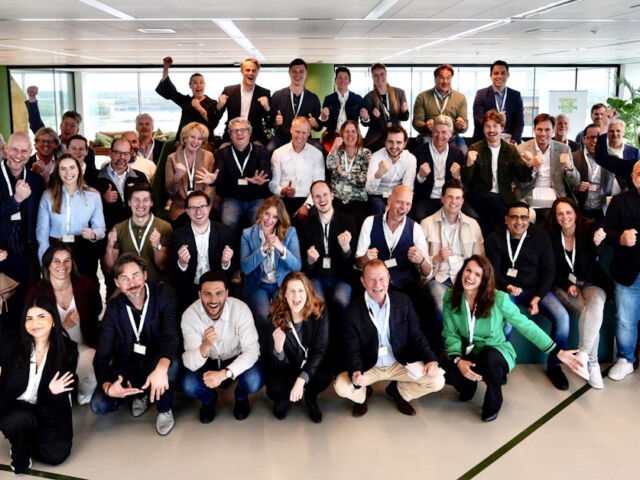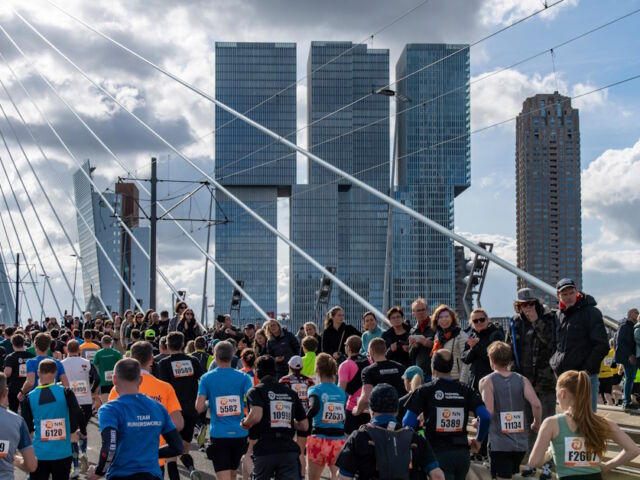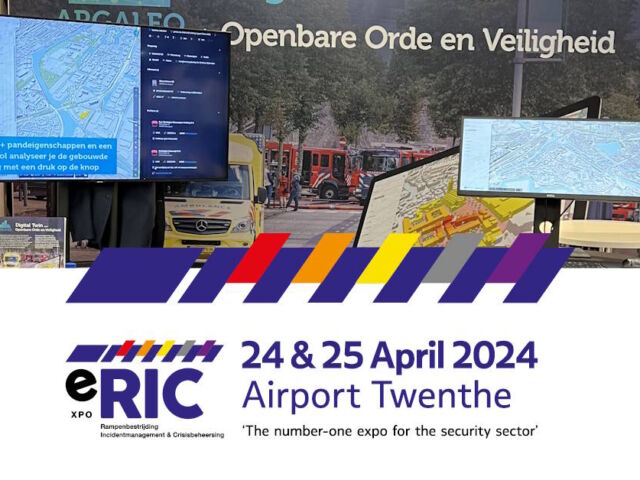In an increasingly crowded spatial environment and with major sustainability challenges, it is clear to many professionals by now: for a large part of passenger transport, cycling has the future. The next few years must therefore be devoted to stimulating and making bicycle use safer and, for example, to linking bicycle use to public transport. But on what basis do you make trade-offs and decisions? Argaleo is working together with knowledge institutions and the province of South Holland to make reliable cycling information available in order to make the leap in bicycle use on a well-founded basis.
Wiesje Hofstede deals with county bicycle policy. "South Holland is a busy province," Wiesje explains. "In addition to the current pressure on accessibility, the number of inhabitants and business activity will continue to increase in the coming years, so the policy challenges in the field of mobility and accessibility will only grow. The province, together with its regional partners, therefore wants to explicitly promote the use of bicycles, also in combination with public transport. Bicycles take up little space, emit no pollutants, cause little nuisance and, of course, it is also good for your health."
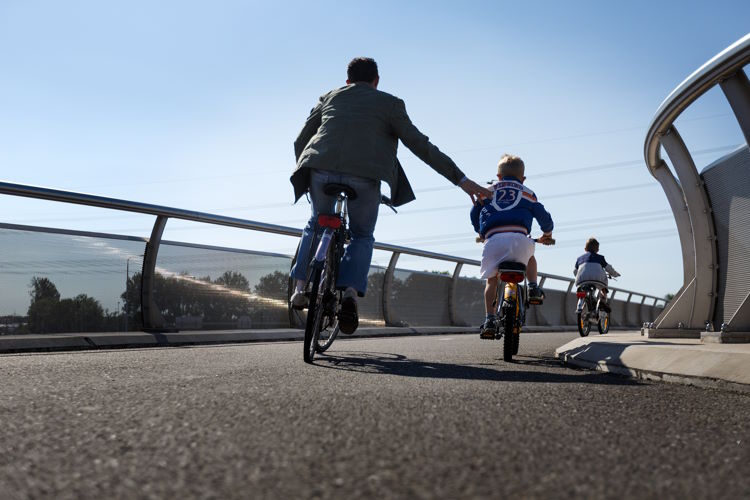
Joost de Kruijf complements her: "To make effective trade-offs and decisions to promote bicycle use, more applicable knowledge is needed. Think of knowledge in the field of bicycle behavior, infrastructural planning and effectiveness and bicycle stimulation." To make all that developed knowledge available to policymakers in a smart, innovative but above all usable way, Argaleo offers the digital twin. "A kind of smart viewing box," says Jeroen Steenbakkers of Argaleo, "in which we unlock all kinds of data to use as information on the basis of which you can make effective policy. In the digital twin we bring together all available data from all over the Netherlands. In this way we turn data into useful information and interpretations, and we can make improvements in the system and additional data from new parties available to as many partners and users as possible."
Cross-province
"Data-driven policy innovation remains complex," Joost explains. "Every policy-making organization has its own wishes and requirements when it comes to desired insights. Behind these practical insights is a world of specialized knowledge and data specialists. At the same time, the insights must be so accessible that every cycling policy maker can work with them. Because data-driven bicycle knowledge is still relatively in its infancy, we want to scale up nationwide, so that there is uniformity in approach and elaboration. At present, there is still too much fragmentation and there are too many local "bicycle dashboards. In knowledge development, we collaborate with different provinces so that more cross-fertilization occurs. In this way, knowledge innovations that we carry out for one province also become available to others. We can only achieve the scale leap in bicycle use together. That is why we think it is important to share knowledge with each other. Not only between provinces, but also with municipalities."
"The province wants to get and keep cycling data, combined with all kinds of other data, in order. That way we can make better choices in which problems or locations we want to address and whether we are actually achieving the goals set to encourage cycling," Wiesje adds. "In addition, we want to use the available data to support municipalities. Especially the somewhat smaller municipalities do not always have the resources, knowledge and time to work on this. We want to facilitate this by making the data and tools we have available to our regional partners, so that they can also use the digital twin, for example. In this way we can visualize where the bottlenecks and opportunities lie for the provincial and regional bicycle network and spatial planning. The accessibility profiles you can see in Digitwin, for example, help with this. These indicate how accessible various destinations (such as a city center, train station or hospital) are by bicycle."
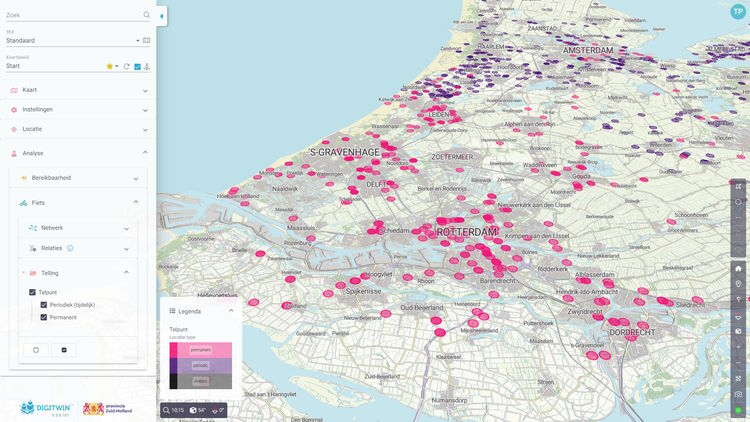
Census points
One of the most obvious methods when it comes to measuring bicycle traffic is counting the number of cyclists on a route. Wiesje: "Since 2021, we have had a lot of permanent bicycle counting points installed in the region. Partly on municipal roads, partly on roads managed by the province. That data is all housed at the National Data Portal Road Traffic (NDW). We asked Argaleo to add this data to the digital twin as well, making it easier to consult and interpret the numbers of cyclists on the network. And by combining it with other available data, the bicycle counts become much more relevant and valuable."
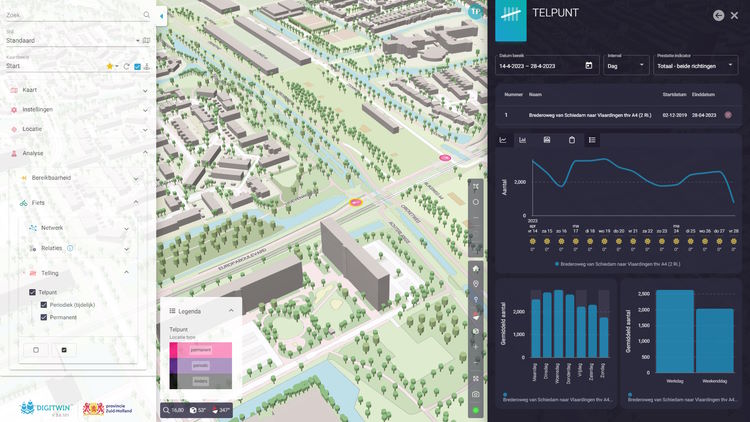
"To enrich the insights, we are constantly looking at what new data streams are available, what data visualization and analysis, and scenario calculations are being developed. If these include useful things, we want to open them up to our customers," Jeroen states. "Because different regions place different emphases in bicycle policy, a province like Noord-Brabant gives different assignments than, say, the provinces of Zuid-Holland or Utrecht. This provides a diverse palette of analysis and visualization possibilities, which benefits all parties involved."
Leader
Compared to cars and public transport, the world of cycling was never as well developed in terms of data. "If you see what has already been done and achieved, the province of South Holland as a frontrunner has clearly contributed to this," Joost says. "Not only in terms of insights into bicycle use on bike paths, but also by using data to strategically look at the development of their bicycle network, the role of cycling in spatial development and bicycle accessibility to public transport." Wiesje: "These insights help with the trade-off framework: what is the mobility effect of policy measures and do the costs and benefits of certain interventions weigh against each other? Argaleo's data and tools give us a basis to be able to provide a good justification. We use them to actually do something, based on the data. The fact that we can do that with more and more cooperation partners is the next step."
More information?
Want to learn more about using cycling data to improve policy?
- read more about our solution for data-driven cycling policy
- Or contact us directly
more news
Subscribe now to the newsletter and stay informed of our digital twin innovations!


